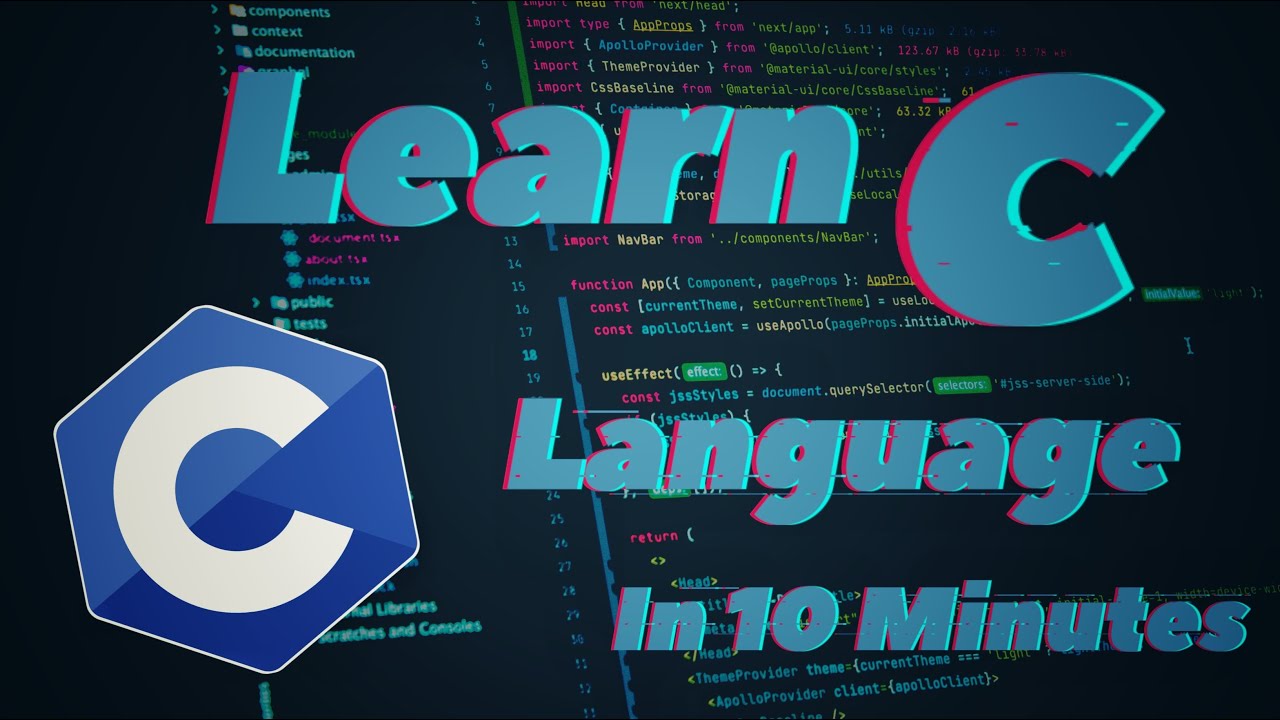1. Introduction to C Language in Tamil || Tamil Pro Techniques ||
Summary
TLDRThis video tutorial introduces the C programming language, highlighting its origins by Dennis Ritchie in 1972 and its classification as a low-level language. It covers the importance of header files for function utilization, such as 'stdio.h' for input/output operations and 'conio.h' for console-specific functions like 'getch' and 'clrscr'. The tutorial demonstrates creating a basic C program in Turbo C, emphasizing the structure of the 'main' function, the necessity of semicolons, and the use of 'getch' to prevent the output screen from disappearing. It also illustrates the consequences of omitting header files, showing errors that arise when 'printf', 'clrscr', and 'getch' functions are not supported due to missing 'stdio.h' and 'conio.h'.
Takeaways
- 📘 The C language is a programming language used for communication with the system.
- 👤 C language was founded by Dennis Ritchie in 1972.
- 🔧 C is considered a low-level programming language.
- 🖥️ C language is platform-dependent and works on specific platforms.
- 📚 It was standardized by ANSI in 1989.
- 📝 Header files in C are essential as they contain functions used in the program.
- 📑 The '#include' directive is used to add header files to a C program.
- 🔑 'stdio.h' is the standard input-output header file, and 'conio.h' is for console input-output.
- 🔠 The 'main' function is the entry point of every C program, enclosed in braces.
- 💬 The 'printf' function is used for printing output in C programs.
- ⏏️ The 'getch' function is used to pause the output until a key is pressed by the user.
- 🔄 The 'clrscr' function clears the screen to display only the current output.
- ⚠️ If the header file 'stdio.h' is not included, the 'printf' function will not work.
- 🛑 Errors will occur if 'conio.h' is not included, as it contains 'clrscr' and 'getch' functions.
Q & A
What is the purpose of a programming language?
-A programming language is used to communicate with a system, allowing humans to give instructions that the system can understand and execute.
What is C language?
-C language is a low-level programming language that was founded by Dennis Ritchie in 1972, used for a variety of programming tasks and known for its efficiency and portability.
Why is the C language considered a low-level language?
-C language is considered low-level because it provides facilities for direct memory access and manipulation, allowing for system-level programming and close interaction with the hardware.
What does ANSI stand for and why is it significant in the context of C language?
-ANSI stands for the American National Standards Institute. It is significant because in 1989, ANSI standardized the C language, ensuring consistency and compatibility across different platforms.
What are header files in C programming and why are they important?
-Header files in C programming contain declarations of functions and variables that can be used in a program. They are important because they allow the program to access pre-defined functions and constants without having to redefine them.
What does the '#include' directive do in C programming?
-The '#include' directive in C programming is used to include the contents of a header file into the current program, making the functions and constants declared in that header file available for use.
What is the main function in C and why is it necessary?
-The main function is the entry point of a C program. It is necessary because every C program must have a main function where the execution of the program begins.
Why do we need to terminate each line of code in a C program with a semicolon?
-Each line of code in a C program must be terminated with a semicolon to indicate the end of a statement. This is a syntactical requirement for the compiler to correctly parse the code.
What is the purpose of the 'getch' function in C programming?
-The 'getch' function is used to wait for a single character input from the user. It is often used to prevent the console window from closing immediately after the program execution, allowing the user to see the output before the window closes.
What happens if you remove the 'stdio.h' header file from a C program that uses the 'printf' function?
-If you remove the 'stdio.h' header file from a C program that uses the 'printf' function, the program will not compile successfully because the prototype for 'printf' is not included, resulting in a compilation error.
Why is the 'clrscr' function used in C programming?
-The 'clrscr' function is used to clear the contents of the screen in a console application, allowing the program to display only the current output without the previous content remaining on the screen.
What errors would occur if the 'conio.h' header file is removed from a program that uses 'clrscr' and 'getch' functions?
-Removing the 'conio.h' header file would result in compilation errors for the 'clrscr' and 'getch' functions because their prototypes and implementations are stored in the 'conio.h' header file.
Outlines

Этот раздел доступен только подписчикам платных тарифов. Пожалуйста, перейдите на платный тариф для доступа.
Перейти на платный тарифMindmap

Этот раздел доступен только подписчикам платных тарифов. Пожалуйста, перейдите на платный тариф для доступа.
Перейти на платный тарифKeywords

Этот раздел доступен только подписчикам платных тарифов. Пожалуйста, перейдите на платный тариф для доступа.
Перейти на платный тарифHighlights

Этот раздел доступен только подписчикам платных тарифов. Пожалуйста, перейдите на платный тариф для доступа.
Перейти на платный тарифTranscripts

Этот раздел доступен только подписчикам платных тарифов. Пожалуйста, перейдите на платный тариф для доступа.
Перейти на платный тарифПосмотреть больше похожих видео
5.0 / 5 (0 votes)






